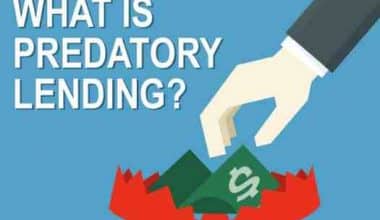In today’s financial landscape, personal loans have become a popular tool for individuals seeking funding for various needs. However, navigating personal loans requires careful consideration and understanding to make informed borrowing decisions. This article aims to shed light on the different types of personal loans available, their features, benefits, and potential risks, empowering readers to borrow wisely.
Importance of Informed Borrowing
Before delving into the specifics of personal loans, it’s crucial to emphasize the importance of informed borrowing. Taking out a loan without understanding its terms, costs, and implications can lead to financial strain and negative consequences. By educating oneself about personal loans, borrowers can make smarter financial choices and avoid common pitfalls.
Types of Personal Loans
Personal loans come in various forms, each designed to cater to different financial needs and circumstances. Let’s explore the primary types of personal loans available in the market.
Secured Personal Loans
On the other hand, secured personal loans require collateral, such as a vehicle, home equity, or savings account. The collateral acts as security for the loan, reducing the risk for lenders and potentially leading to lower interest rates for borrowers. Secured loans are ideal for individuals with valuable assets willing to pledge them to secure a loan. However, failing to repay a secured loan can result in the loss of the pledged collateral.
Debt Consolidation Loans
Debt consolidation loans assist individuals in merging numerous debts into one consolidated loan. This approach enables borrowers to enjoy advantages such as reduced overall interest rates, simplified monthly payments, and a more organized debt repayment plan. These loans prove especially beneficial for individuals burdened with high-interest debts, such as credit card balances, aiming to simplify their financial management and decrease interest expenses.
Home Equity Loans and Lines of Credit
Home equity loans and lines of credit utilize the equity in a borrower’s residence as security. Home equity loans offer a one-time payment, while lines of credit provide ongoing access to funds akin to a credit card. These options are ideal for homeowners seeking financial support for significant expenditures like home improvements, education costs, or medical expenses. Nevertheless, borrowers must exercise caution, as failing to meet repayment obligations could result in the risk of foreclosure on their properties.
Personal Lines of Credit
Personal lines of credit offer borrowers a flexible borrowing option with a predetermined credit limit. Like a credit card, borrowers can access funds as needed and only pay interest on the borrowed amount. Personal lines of credit are ideal for managing fluctuating expenses or unexpected financial needs. However, borrowers should exercise discipline to avoid overspending and accumulating excessive debt.
Comparing Personal Loan Options
Now that we’ve explored the different types of personal loans let’s explore how borrowers can effectively compare these options to make informed decisions.
Interest Rates and Fees
One of the primary factors to consider when comparing personal loan options is the interest rate. Borrowers should pay attention to whether the interest rate is fixed or variable, as well as any additional fees or charges, such as origination fees, prepayment penalties, or late fees. Comparing the total cost of borrowing, including interest and fees, can help borrowers choose the most cost-effective loan option.
Repayment Terms and Flexibility
Another crucial aspect to evaluate is the repayment terms and flexibility offered by different personal loan options. Borrowers should consider the loan duration (short-term vs. long-term), monthly payment amounts, and the availability of flexible repayment options, such as bi-weekly payments or autopay. Choosing a loan with manageable repayment terms ensures borrowers can comfortably meet their financial obligations without straining their budget.
Eligibility Requirements and Approval Process
Borrowers must understand the eligibility requirements and approval process for personal loans. When evaluating loan applications, lenders typically assess factors such as credit score, income verification, employment history, and debt-to-income ratio. By knowing the criteria upfront, borrowers can improve their chances of approval and secure favorable loan terms.
Risks and Considerations
While personal loans offer financial flexibility, they also come with risks that borrowers should be aware of.
Risk of Default and Collateral Loss
For secured personal loans, the risk of default is tied to the collateral the borrower pledges. Failing to repay the loan can result in the loss of the pledged asset, such as a vehicle or home equity. Borrowers should consider their ability to repay a secured loan to avoid potential collateral loss.
Alternatives to Personal Loans
While personal loans are a viable option for many borrowers, exploring alternative borrowing options is essential. These alternatives may include credit cards, home equity options, peer-to-peer lending, or payday alternative loans. Each alternative has pros and cons, and borrowers should assess their needs and financial situation before choosing the most suitable option.
For more information on personal loans and to explore loan options, visit titlelo.com.
Conclusion
In conclusion, understanding and comparing different types of personal loans is crucial for borrowing wisely and achieving financial goals. By educating themselves about loan options, interest rates, fees, repayment terms, and risks, borrowers can make informed decisions that align with their financial needs and capabilities. Borrowing wisely entails evaluating options, comparing costs, managing repayments responsibly, and considering alternative solutions when necessary. Ultimately, responsible borrowing leads to financial stability and long-term financial well-being.






